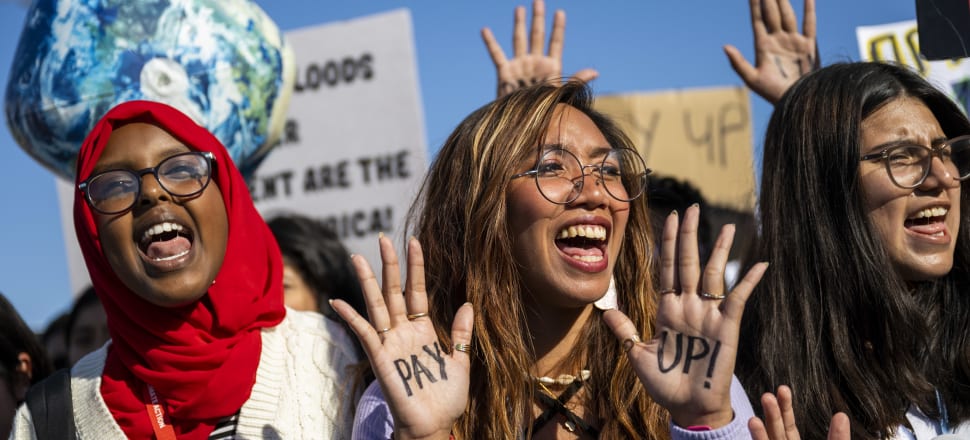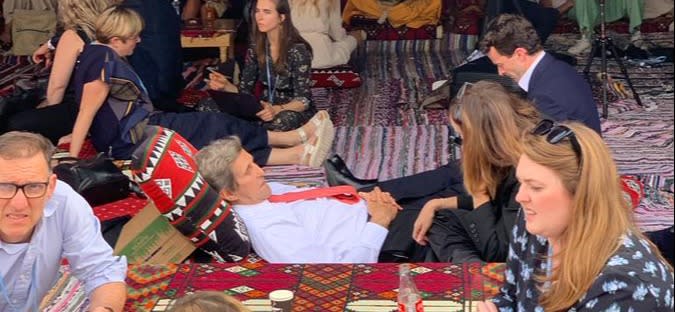
UN climate summits routinely over-run their deadlines, and this week's in Egypt has an 11th-hour proposal from the EU to wrestle with to try to achieve real progress on loss and damage, and phasing out fossil fuels.
The first glimmer of hope for a breakthrough at the COP 27 climate negotiations came with a marked shift in the European Union’s position.
Setting aside its earlier reluctance, it proposed a new facility to provide developing countries with substantial money to help them cope with the loss and damage they’re suffering from extreme climate events.
To build support for the initiative, it linked it to a proposal that all countries, rich and poor, agree to achieve peak emissions in 2025 and to phase out all fossil fuels with a deadline to be determined.
The EU’s climate chief Frans Timmermans emphasised the two strands of the offer -- mitigating climate change and addressing the loss and damage caused by it -- “are two sides of the same coin.”
New Zealand Climate Minister James Shaw expressed strong support for the facility and the phase out of fossil fuels.
“It’s a very good proposal, particularly because it also reinforces the need for support to be directed to the countries that need it the most; and the need to be stronger on mitigation and 1.5 C - which is the best way to avoid loss and damage. And we strongly support phasing out fossil fuels.”
On behalf of developing countries, the shift by the EU was welcomed by Seve Paeniu, Finance Minister of Tuvalu, in a press conference with climate NGOs. He stressed, though, the final agreement needed to include much more, such as far stronger language on the phase out of fossil fuels.
Later yesterday, he talked to Newsroom about the experiences of Tuvalu’s delegation at COP27 – it numbered some 30 people, including five young delegates - and its broader climate goals.
But the EU added a caveat: that a broad donor base was required for the loss and damage fund. This was likely aimed at China and well-developed petro-states such as Saudi Arabia, the UAE and Kuwait.
That prompted immediate pushback. China, for example, said “this is the time that we should implement the Paris Agreement and not the time to rewrite the [UN climate] convention.”
That’s a coded reference to the 1992 classification of developed and developing countries, which is still the working definition today. Yet much has changed since. Per capita, the Chinese have become 34 times richer and four times more polluting. China’s is now the largest emitter among nations.
Hence, the US and the EU believe China should contribute to the loss and damage fund, not be a beneficiary of it. Likewise, well-developed petro-states.
The US has strongly opposed the fund for that and other reasons. Notably it refuses to accept liability or any hint of reparations for its vast historic emissions.
The proposal’s supporters include the UK, Australia, Switzerland and Norway. But the US and a number of other key countries are going to have to sharply shift their positions in the arduous last gasp of negotiations if the outline of a meaningful finance facility for loss and damage is to be agreed at this COP.
Negotiations on some of the many outstanding issues continued through Thursday night and Friday. Theoretically, COP 27 was supposed to finish on Friday at 6pm Egyptian time (5 am today in NZ) but was heading for another all-nighter in overtime.
COPs usually run long. Last year’s in Glasgow lasted another 24 hours. The record in recent times went to COP 25 in Madrid in 2019. It clocked up 44 extra hours, finishing at 2pm Sunday afternoon. But by all accounts, the second all-nighter was detrimental, resulting in a worse outcome than might have been achieved on the Saturday.
There is a danger of such a dysfunctional long game here at Sharm el-Sheikh, given Egypt’s weak presidency of COP 27. Its failure to resolve a raft of issues last week and early this week has over-burdened the agenda and delayed work on the final statement.
The first draft didn’t land until 4am Friday. Those hooked on the arcane ways of UN climate negotiations can read the 10 pages here.
In addition to the fraught issue of finance for loss and damage, other critical issues generating heated negotiations include whether to include a commitment to phase down or out all fossil fuels; and how tough a stand COP 27 will take on faster emissions reductions.
The draft also incorporates key elements of recently released science reports on escalating climate change and risks. It also includes some sobering financial statistics such as annual investment in renewable energy needs to rise to US$4 trillion by 2030, and that an aggregate US$5.6 trillion in additional funding will be needed this decade to enable developing countries to meet their climate-related goals.
The arduous hours of negotiations ahead will sorely test people’s endurance. Yet, for all the ostentatious luxury of the COP 27 venue, the Tonino Lamborghini International Convention Centre offers only one place near the action for negotiators to grab a restful nap.

A few days ago, US climate envoy John Kerry was spotted giving the rugs and cushions a test snooze. A veteran of innumerable negotiations, he would have known his COP 27 work had barely begun.







